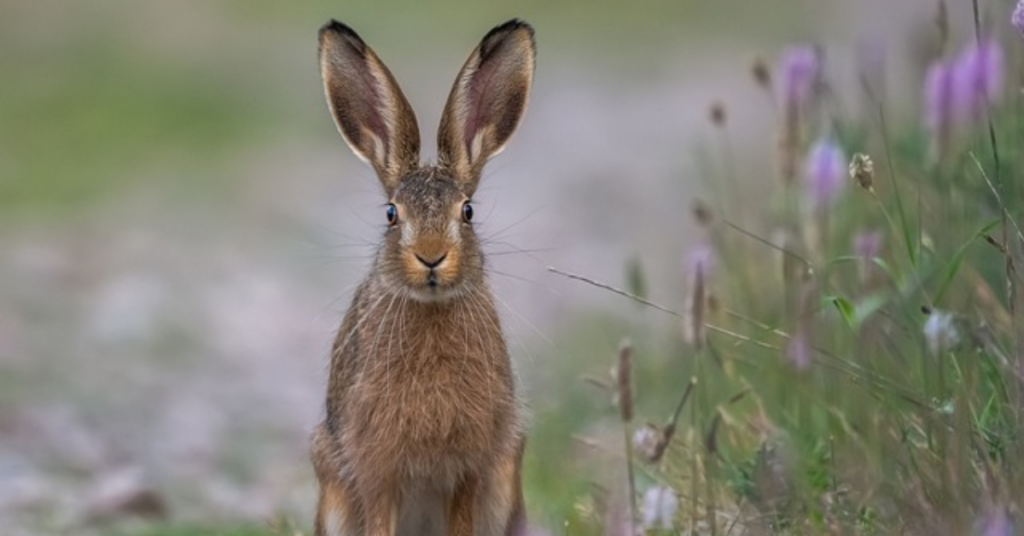Hares are generally not dangerous to humans. They are timid, herbivorous animals that prefer to flee rather than confront threats. However, like most wild animals, they can defend themselves if cornered or threatened. Hares may kick with their strong hind legs or bite if they feel endangered, but such instances are rare.
Are Hares Dangerous

Are Hares Dangerous? Debunking Myths and Understanding Their Behavior
Hares, with their swift movements and large ears, are fascinating creatures often surrounded by myths and misconceptions. One common question people ask is, “Are hares dangerous?” While these animals are generally harmless, there are specific behaviors and situations worth understanding. Here’s an in-depth look at whether hares pose any danger and the facts behind their behavior.
People are often curious about the size of hares because these animals are larger and more distinct compared to rabbits, which they are frequently mistaken for.
1. Are Hares Aggressive?
- Non-Aggressive Nature: Hares are typically non-aggressive and prefer to flee rather than fight when faced with danger. Their exceptional speed and agility make running their primary defense mechanism.
- Territorial Behavior: While they are not territorial in the same way as some other animals, they may show mild aggression toward other hares during the breeding season.
2. Do Hares Attack Humans?
- Rare Encounters: Hares are wild animals that avoid human contact whenever possible. Instances of hares attacking humans are extremely rare and usually occur if they feel cornered or threatened.
- Self-Defense: If a hare feels trapped, it may use its strong hind legs to kick as a defensive measure. However, this is a last resort and not an act of aggression.
3. Are Hares Dangerous to Pets?
- Not a Threat to Predators: Hares are prey animals and do not pose a significant threat to domestic pets like dogs or cats.
- Chasing Risk: Pets, particularly dogs, might chase hares, potentially leading to injury for both the pet and the hare.
4. Disease Transmission Concerns
- Carriers of Tularemia: Hares can carry tularemia (rabbit fever), a bacterial disease that may spread to humans or pets through direct contact, ticks, or biting flies. Proper hygiene and avoiding close interaction with wild hares can mitigate this risk.
- Parasites: Hares may also carry parasites such as fleas and ticks, but these are more of a nuisance than a danger to humans.
5. Breeding Season Aggression
- Boxing Behavior: During mating season, hares engage in “boxing,” where females fend off overly eager males. This behavior is directed at other hares, not humans or other animals.
- Increased Activity: Breeding season may make hares more visible and active, but it doesn’t make them dangerous.
6. Defensive Kicking
- Strong Hind Legs: A hare’s powerful hind legs can deliver a strong kick when it is cornered. This defensive move is mainly used to escape predators, not to attack humans.
- Protective Behavior: Mother hares may show slight aggression if their young are threatened, but they rarely confront larger animals.
7. Are Hares Dangerous to the Environment?
- Impact on Crops: In agricultural settings, hares can be considered a nuisance because they feed on crops and young saplings, potentially causing damage. However, this behavior is not dangerous in the traditional sense.
- Ecological Role: Hares play a vital role in ecosystems as prey for predators and as herbivores that help maintain vegetation balance.
8. How to Safely Observe Hares
- Maintain Distance: Respect their space and observe from afar. Hares are shy creatures and will usually flee if approached.
- Avoid Handling: Do not attempt to touch or handle wild hares, as this may stress them and increase the risk of disease transmission.
Conclusion: Are Hares Dangerous?
Hares are not inherently dangerous to humans or pets. They are shy, flighty animals that prefer to avoid confrontation. While their strong hind legs and potential for disease transmission warrant caution, hares pose minimal risk when respected in their natural habitat. Proper understanding of their behavior ensures peaceful coexistence with these fascinating creatures. Are you interested in knowing ‘ Types of Hares ‘. Yes, You heard right! Yeah , There are types of hares which are interesting to read.

